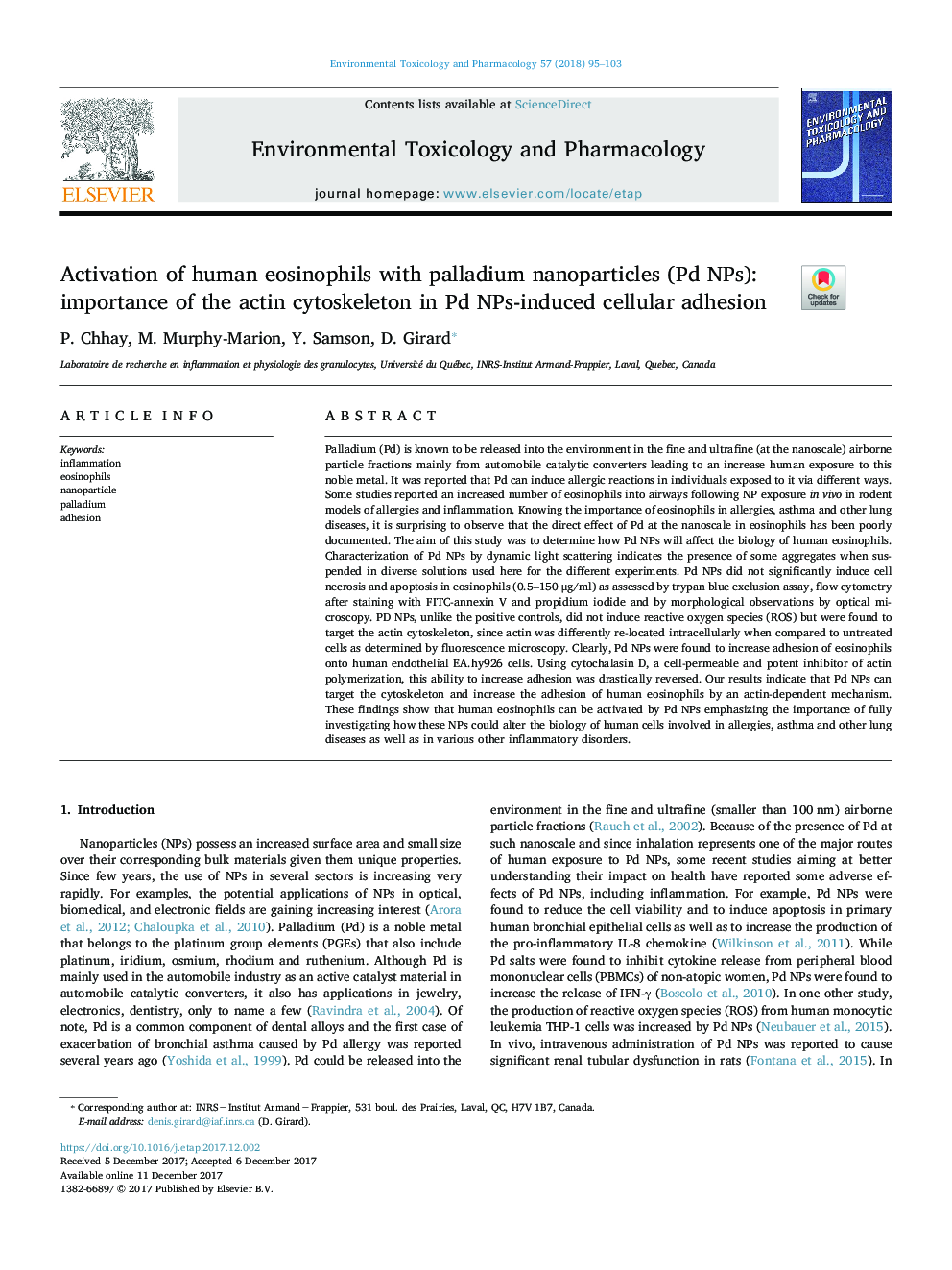| کد مقاله | کد نشریه | سال انتشار | مقاله انگلیسی | نسخه تمام متن |
|---|---|---|---|---|
| 8546055 | 1561687 | 2018 | 9 صفحه PDF | دانلود رایگان |
عنوان انگلیسی مقاله ISI
Activation of human eosinophils with palladium nanoparticles (Pd NPs): importance of the actin cytoskeleton in Pd NPs-induced cellular adhesion
دانلود مقاله + سفارش ترجمه
دانلود مقاله ISI انگلیسی
رایگان برای ایرانیان
کلمات کلیدی
موضوعات مرتبط
علوم زیستی و بیوفناوری
علوم محیط زیست
بهداشت، سم شناسی و جهش زایی
پیش نمایش صفحه اول مقاله

چکیده انگلیسی
Palladium (Pd) is known to be released into the environment in the fine and ultrafine (at the nanoscale) airborne particle fractions mainly from automobile catalytic converters leading to an increase human exposure to this noble metal. It was reported that Pd can induce allergic reactions in individuals exposed to it via different ways. Some studies reported an increased number of eosinophils into airways following NP exposure in vivo in rodent models of allergies and inflammation. Knowing the importance of eosinophils in allergies, asthma and other lung diseases, it is surprising to observe that the direct effect of Pd at the nanoscale in eosinophils has been poorly documented. The aim of this study was to determine how Pd NPs will affect the biology of human eosinophils. Characterization of Pd NPs by dynamic light scattering indicates the presence of some aggregates when suspended in diverse solutions used here for the different experiments. Pd NPs did not significantly induce cell necrosis and apoptosis in eosinophils (0.5-150 μg/ml) as assessed by trypan blue exclusion assay, flow cytometry after staining with FITC-annexin V and propidium iodide and by morphological observations by optical microscopy. PD NPs, unlike the positive controls, did not induce reactive oxygen species (ROS) but were found to target the actin cytoskeleton, since actin was differently re-located intracellularly when compared to untreated cells as determined by fluorescence microscopy. Clearly, Pd NPs were found to increase adhesion of eosinophils onto human endothelial EA.hy926 cells. Using cytochalasin D, a cell-permeable and potent inhibitor of actin polymerization, this ability to increase adhesion was drastically reversed. Our results indicate that Pd NPs can target the cytoskeleton and increase the adhesion of human eosinophils by an actin-dependent mechanism. These findings show that human eosinophils can be activated by Pd NPs emphasizing the importance of fully investigating how these NPs could alter the biology of human cells involved in allergies, asthma and other lung diseases as well as in various other inflammatory disorders.
ناشر
Database: Elsevier - ScienceDirect (ساینس دایرکت)
Journal: Environmental Toxicology and Pharmacology - Volume 57, January 2018, Pages 95-103
Journal: Environmental Toxicology and Pharmacology - Volume 57, January 2018, Pages 95-103
نویسندگان
P. Chhay, M. Murphy-Marion, Y. Samson, D. Girard,